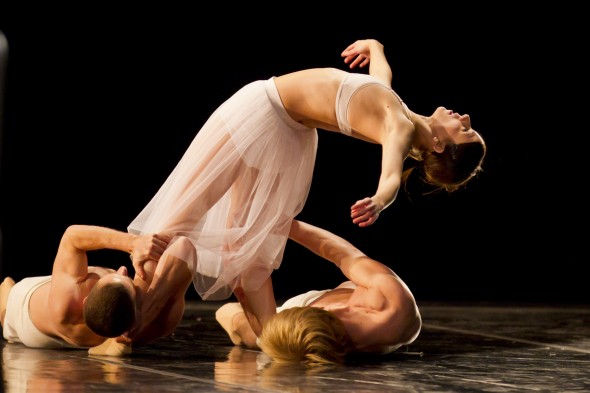 Being a St. Louis transplant, I am consistently amazed at the cultural and artistic resources we have in the region considering the size of this city. The St. Louis Symphony Orchestra is one of those incredible gems. Their Friday evening performance with the contemporary dance company, Hubbard Street Dance Chicago, was an enthralling experience overall and offered audiences the rare chance to enjoy contemporary dance with live music, something most dance companies cannot afford without co-producers. The connectivity between the orchestra and the dancers (even on a limited rehearsal schedule) was clear and confident.
Being a St. Louis transplant, I am consistently amazed at the cultural and artistic resources we have in the region considering the size of this city. The St. Louis Symphony Orchestra is one of those incredible gems. Their Friday evening performance with the contemporary dance company, Hubbard Street Dance Chicago, was an enthralling experience overall and offered audiences the rare chance to enjoy contemporary dance with live music, something most dance companies cannot afford without co-producers. The connectivity between the orchestra and the dancers (even on a limited rehearsal schedule) was clear and confident.
The performance begins with Mozart’s lively Le nozze di Figaro Overture, a comforting and familiar piece that the symphony played with great enthusiasm. The orchestra did a wonderful job of presenting those naked, glorious, and untainted Mozart lines where there is absolutely no wiggle room for intonation or ensemble issues.
The Hubbard Street Dance Chicago dancers joined the St. Louis Symphony Orchestra for Arcangelo with music by Corelli and Scarlatti. Concertmaster David Halen’s exquisite playing really sang in this work. The choreography by Nacho Duato and the dancers visually brought to life all of the luscious stretching, pushing, pulling, and quick changes between staccato and legato that are written in the score. Countertenor, David Stephens, gave a historically accurate performance, filled with the clean, round sounds, which we heard in the Mozart.
The Brandenburg Concerto left us breathless. I had to restrain myself from dancing in the aisle. After seeing the dancers in the Corelli and Scarlatti pieces, it was a nice opportunity to listen to the orchestra alone playing this famous Baroque work. The symphony’s attacks, dynamics, and textures took on a new feel in the Brandenburg after seeing them visually embodied by the dancers earlier.
The Anna Clyne piece was my favorite. Organic, rather unearthly music is joined by choreography that is subtle, filled with breath, challenging, and unique yet somehow familiar. The shadowed lighting design, white costumes, and poignant playing by the orchestra was memorable. I was amazed by the dancers’ gorgeous use of their feet–their roll down and languid slow walks across the stage were stunning.
St. Louis Symphony Orchestra Music Director and Conductor David Robertson, smartly gives us a little humor and playfulness and of course connections to the Baroque music we heard earlier in the concert, by programming Stravinsky’s Dumbarton Oaks concerto. We get to hear the symphony’s stellar woodwind and brass sections in this piece and solid piano playing by Peter Henderson.
The most exhausting and full of more obvious dance “tricks” were found in the visually arresting, “As few as 3000,” with choreography by Alejandro Cerrudo and music by Martinu. There are some moving moments between two dancers undulating their torsos and heads to meet foreheads in this work, bringing us full circle to the curvatures we heard and experienced from the music and choreography in the first half of the program.
In general, it is rather challenging to program a concert featuring contemporary dance and a relatively traditional symphony orchestra in a large hall because typically the audiences of each do not crossover significantly. The cost of the concert tickets will most likely limit the usual contemporary dance audiences from being able to attend this performance, but I think that the event evolved into a fruitful collaboration that may excite current classical music patrons into exploring the realm of contemporary dance a little more.
There is one final performance Sunday, February 19 at 3 pm.









